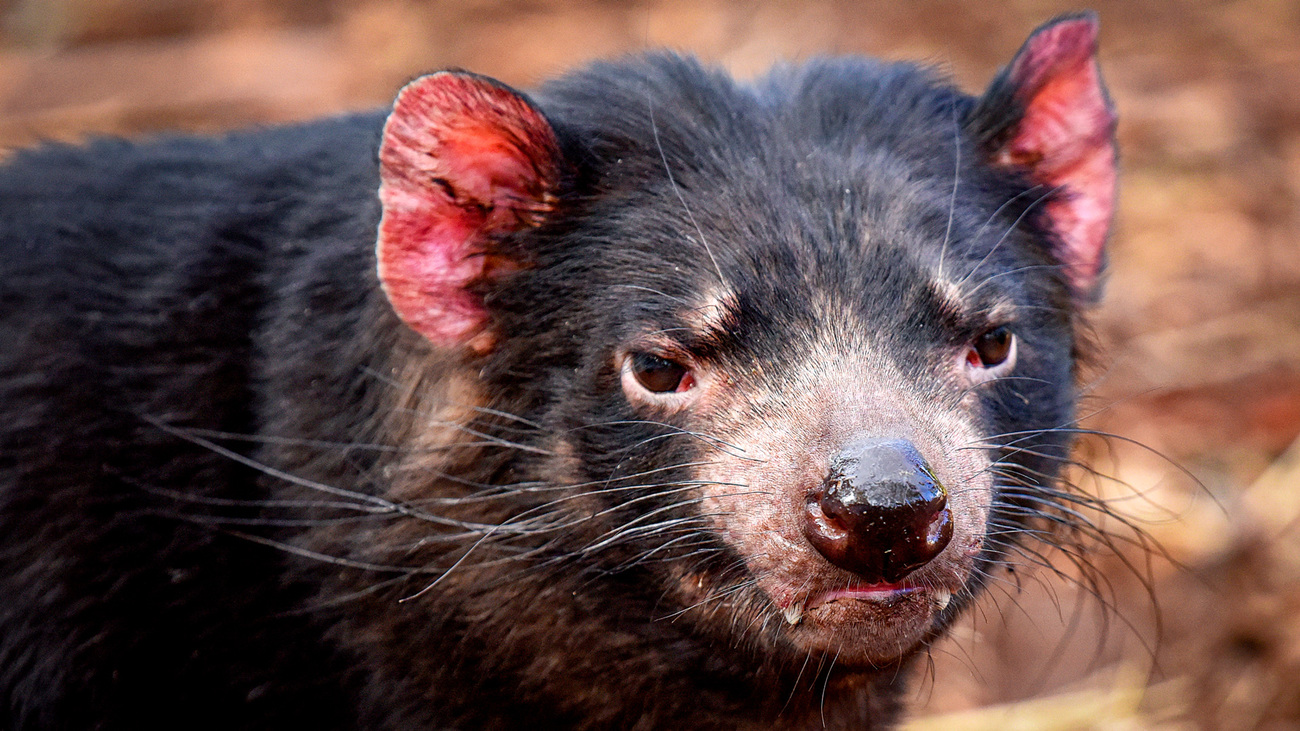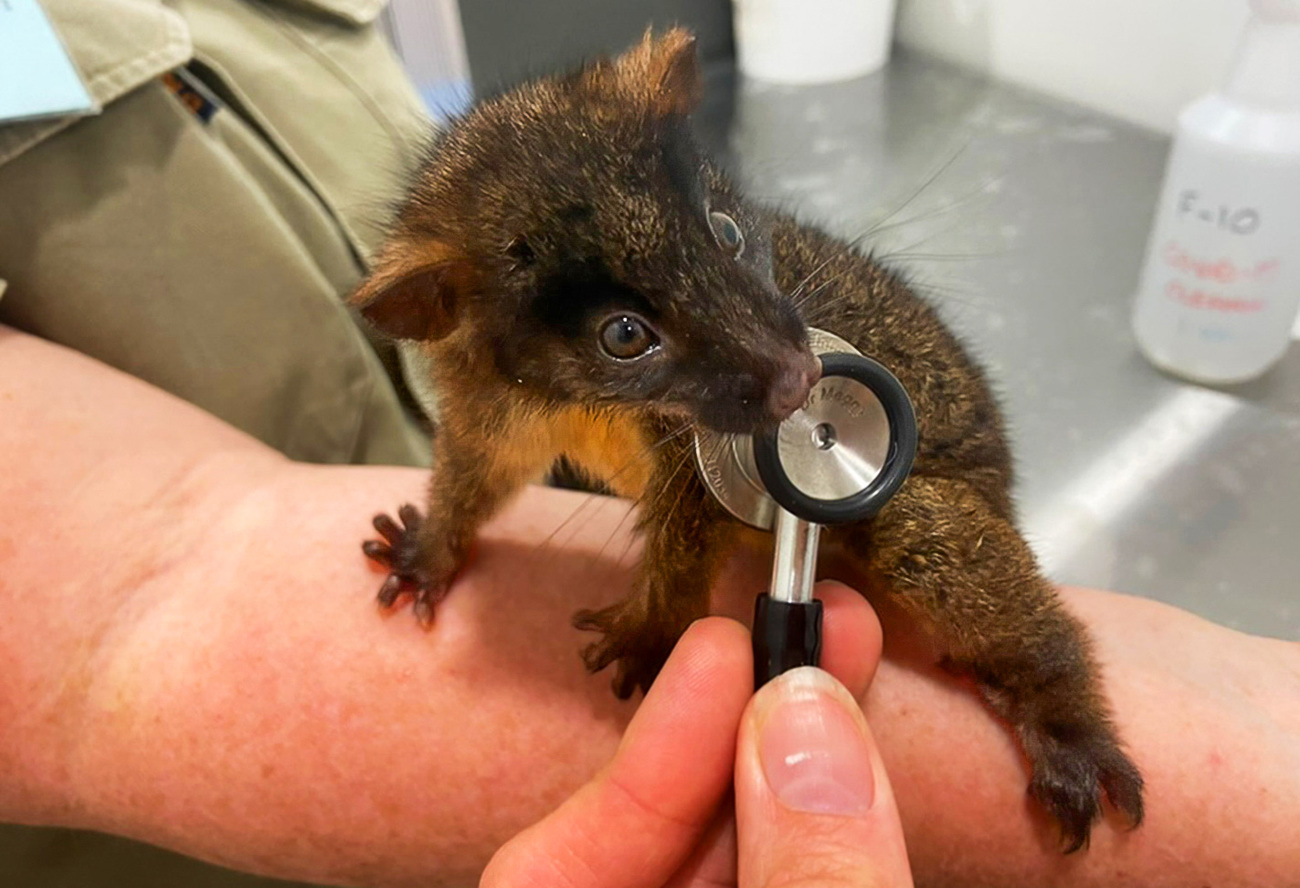10 of the most endangered animals in Australia
10 of the most endangered animals in Australia
Australia is one of the most biodiverse countries in the world, hosting nearly 600,000 native species of plants and animals. It is also home to half of the world’s marsupial species, including tree kangaroos and wombats—and many other species that are found nowhere else on the planet.
Sadly, Australia is facing an extinction crisis. The country has lost more biodiversity than any other developed nation in the past 200 years. Extreme weather and habitat loss are pushing many more species to the brink. Learn more about some of the most endangered animals in Australia, from swift parrots to greater gliders.
IFAW is working hard to protect endangered animals in Australia. We’re defending koala habitats and fighting wildlife crime. Alongside our partners, we’re rescuing animals from devastating bushfires.
Want to do your part to support Australian wildlife? Start by learning about some of the most endangered animals in Australia, from swift parrots to greater gliders.
1. Koalas
Koalas are marsupials that can be found across eastern and southeastern Australia. They are a flagship species because if they are protected, the habitat of hundreds of other plants and animals is also protected.
Habitat loss is one of the greatest threats to koalas. Land clearing, deforestation, and urbanization are destroying vital eucalyptus tree forests that provide koalas with homes and food. Here at IFAW, we’re supporting the use of detection dogs to find koala habitats so we can better protect them.
But unprecedented droughts and bushfires have driven some already struggling local koala populations to near extinction. After the catastrophic Black Summer bushfires of 2019 to 2020 led to devastating impacts on koala populations, IFAW called for the species to be up-listed to endangered along the east coast. In 2025, they are classified as endangered by the Australian government.
2. Tasmanian devils
Once abundant on mainland Australia, the Tasmanian devil is now only found on the island state of Tasmania. They are the largest living carnivorous marsupials despite being only the size of a small dog.

The species is listed as endangered by the IUCN and the Australian government and has a decreasing population. The main threat is a disease called devil facial tumor disease—a cancerous disease that is highly contagious and fatal. Tasmanian devils are also victims of roadkill and dog attacks, and in some areas they are persecuted by humans. Our partners at Bonorong Wildlife Hospital frequently treat Tasmanian devils in need of veterinary care. As part of our work together, we fund Bonorong’s essential veterinary staff four days a week.
3. Northern hairy-nosed wombats
Wombats are marsupial members of the family Vombatidae, and interestingly are related to koalas. There are three species of wombat. In 2025, the northern hairy-nosed wombat is still recognized as critically endangered by the IUCN and the Australian government. They are scarcer than the giant panda and the Sumatran tiger. Today, there are just 80 mature individuals left in the wild, living in Epping Forest National Park in central Queensland.
This serves as a stark reminder of what can happen if we don’t protect the other, more abundant wombat species that are threatened by a disease called mange, agricultural activities, vehicles, droughts, floods, and fires.
4. Southern right whales
The southern right whale is a large baleen whale which visits southern Australian between late April and early November and is protected throughout Australian waters.

Similar to its close relative the North Atlantic right whale, the species was hunted to the brink of extinction until it was protected under the International Convention for the Regulation of Whaling in the 1930s. In Australia, southern right whales are classified as endangered. When in Australian waters, the southern right whale is most at risk of entanglements, vessel strikes, underwater noise, and infrastructure/offshore development.
IFAW continues to urge the Australian government to better protect this and other cetacean species to ensure their preservation into the future. We’re campaigning to reduce ocean noise and reroute shipping lanes so boats avoid whale habitats.
5. Swift parrots
The critically endangered swift parrot is fast-flying and mostly bright green in color with red and yellow feathers around its beak. It breeds in Tasmania during Australia’s summer and migrates to the mainland for winter.

The main threats facing swift parrots include habitat loss and predation by other species. In Tasmania, these birds search for hollows within mature blue gum and black gum trees to raise their young; however, these are becoming harder to find due to land clearing and bushfires. According to the IUCN, in 2025, there are less than 2,500 mature swift parrots left in the wild.
Our partners in Tasmania at Bonorong Wildlife Hospital run the state’s first and only dedicated wildlife hospital, and the IFAW-supported veterinarian team has helped to give many swift parrots a second chance at life back in the wild over the years.
6. Western ringtail possums
The critically endangered western ringtail possum is an arboreal possum, spending most of its time feeding, resting, and socializing high in the forest canopy. Western ringtail possums are only found in the southwestern part of Western Australia and have disappeared from most of their original range. They have fallen victim to habitat loss from land clearing and logging, as well as predators such as foxes and cats.

During heatwaves, the possums can be susceptible to burns on their paws as they try to find shelter by crossing hot surfaces. Severe burns can significantly challenge this arboreal species’ movements and climbing ability. IFAW provides emergency assistance to local rescue groups to support the immediate veterinary treatment of the burns to allow these critically endangered animals the greatest chance to recover and be returned to the wild.
7. Silver-headed antechinus
Antechinus are small carnivorous marsupials that resemble mice. They are known for their lethal love life, as males will mate until they die. Many different species of antechinus can be found throughout Australia, with some seen taking up residence in marsupial dens installed at Two Thumbs Wildlife Sanctuary by IFAW and Habitat Innovation and Management in southern New South Wales.
The silver-headed antechinus is classified as endangered and is only known to be found in three parts of Queensland. They are at most risk of bushfires and predation by invasive species. The black-tailed antechinus is also classified as endangered and faces similar threats to its silver-headed cousin.
8. Hawksbill turtles
A hawksbill turtle’s head ends in a sharp point resembling a bird’s beak, which is how it got its name. They’re known to breed along the Great Barrier Reef and nest in parts of the Northern Territory and Western Australia.

Like other species of sea turtles, the critically endangered hawksbill turtle contributes to marine ecosystems by transporting important nutrients within the ocean. They are at risk of international illegal wildlife trade, habitat loss, ingesting plastic, and human activities such as fishing.
IFAW works closely with the Australian Seabird and Turtle Rescue to rescue and rehabilitate injured turtles that need care. We provide vital resources, like heaters, that allow our partners on the ground to nurse sea turtles back to health before releasing them back into the wild.
9. Mountain pygmy possums
The mountain pygmy possum is an endangered, mouse-sized possum. It is the only hibernating marsupial and Australia’s only mammal that has adapted to live exclusively in the snow-covered alpine regions of Victoria and New South Wales.
It is listed as endangered by the Australian government and critically endangered by the IUCN due to the destruction and fragmentation of its habitat, predation by foxes and feral cats, and major declines of its primary food source—the bogong moth.
In 2025, the mountain pygmy possum can only be found in three small and isolated populations, and its population is decreasing.
10. Greater gliders
The greater glider is Australia’s largest gliding mammal. They have long, furry tails and large, fluffy ears and are found in forests along Australia’s east coast. Greater gliders are dependent on hollow-bearing trees for shelter and nesting and mainly eat eucalyptus leaves. They are classified as endangered, with their main threat being habitat loss and fragmentation due to land clearing and bushfires.
In southern New South Wales, a greater glider was recently spotted at Two Thumbs Wildlife Sanctuary, which was destroyed by the Black Summer bushfires of 2019-2020. IFAW has been working with Habitat Innovation and Management to install nest boxes large enough to house greater gliders in an effort to bring them and other wildlife back to the property.
Want to help protect these endangered species and support IFAW’s work in Australia?
Related content
Our work can’t get done without you. Please give what you can to help animals thrive.